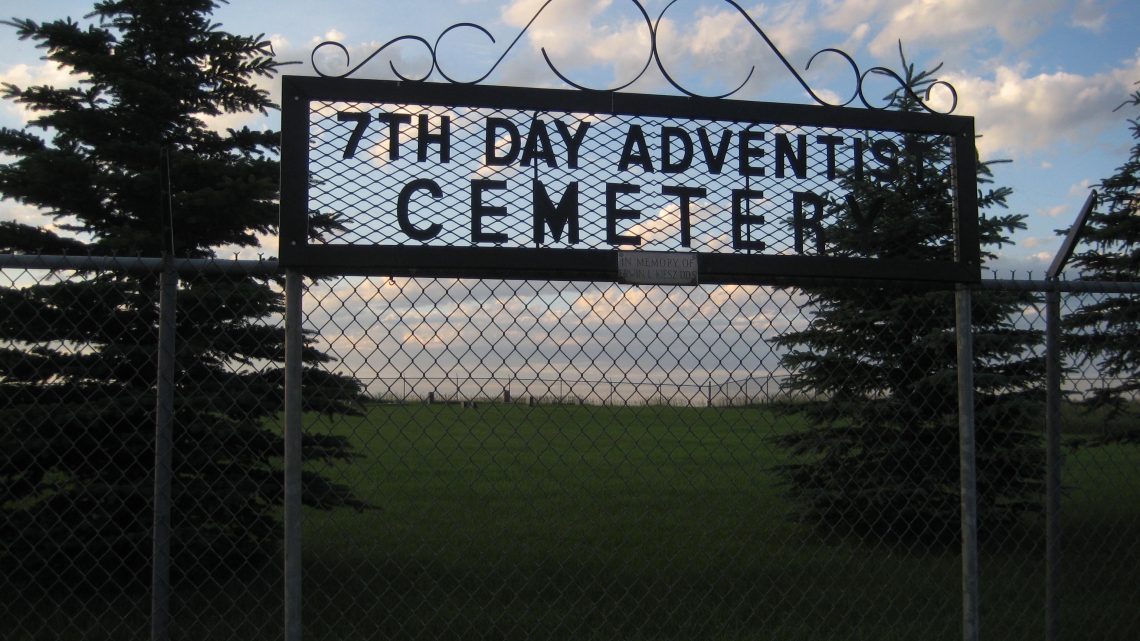Adventist churches were first planted in Dakota Territory during the 1860s. As evangelistic work continued through the statehoods of North and South Dakota in the early 1900s, Adventist churches continued to sprout up in various locations. However, denominations from which Adventist converts left were no longer amiable to allowing deceased Adventists to be buried in their cemeteries, so it became necessary for each Adventist church to have its own burial plots.
As demographics have gradually changed through the years from rural to urban, small towns and churches have suffered; many rural Adventist churches have closed or moved to more heavily populated areas. The associated cemeteries—whether currently beside a church or not—are part of the Dakota heritage and have tales to tell.
The small community of Kulm, North Dakota has three Adventist cemeteries—the Little Kulm, the Old Kulm and the Kulm Cemetery—because the church was moved three times. Members Lenhardt and Darlene Kungel even have a story to go with the burial grounds:
“A man involved in three deaths, including his own, needed to be buried. Neither the Baptists nor the Lutherans wanted to inter the murderer so the Adventists buried him in their cemetery. The reason the Adventists took him is because he was related to one of the Adventist members, a second cousin to Mrs. Fred Grenz.
“The murderer was married and had a baby girl, who was later adopted by a couple in Minneapolis. We don’t know if he had more children or what happened to his wife.
“By 2003, this baby girl had grown up. She drove to North Dakota with the intent of finding her father’s grave. When she arrived in Edgeley, a funeral procession was making its way through town, so she followed it. At the graveside she asked around about her father. She was told to contact us, members of the Kulm Adventist Church.
“When Dobbler’s (the murderer) adult daughter called, we told her where the grave site was and gave directions for how to get there. She wanted to know why her dad committed the murders. She was raised by great parents and had a wonderful life but had always wondered about her heritage. She wanted the truth with nothing held back. We told her the story, as we knew it. From then on there were flowers at Mr. Dobbler’s grave every year until around 2013. No one remembers the daughter’s name but we now fear she is no longer alive or able to visit the grave.”
Showing Kindness
In Hebron, North Dakota, with a population of 721, the Hebron Adventist Cemetery is one of six cemeteries. According to longtime resident Sheldon Fisher, a couple with two young boys moved to the area for work in the 1990s. Their sons were playing on the ice the winter of 1995 when the nine-year-old broke through and drowned. Because the family did not attend any of the local churches, a burial was denied by all of the other denominations’ cemeteries.
The funeral home director called Jerry Chase, sexton of the Adventist cemetery to ask if the boy, Justin Hulm, could be buried in the Adventist cemetery. Jerry said he was sure it would be fine and conferred with Ivan Sievers and Sheldon Fisher, elders of the church, who both agreed. The little grave is well cared for and often has flowers at its base.
Another family, with a son in this cemetery, had twin boys who contracted polio on the same day in the 1940s. One of the boys, Tommy Kearnes, died and the other lost the use of one arm. The living twin did not let his disability deter him. He became a teacher, taught locally for several years and then became a university history professor.
In the Bowdon Country Adventist Cemetery is buried the infamous outlaw Gordon Kahl. Several books, a documentary and a movie have been produced about his escapades.
Within the last few years a couple from the Lutheran faith were buried in the Robinson Adventist Cemetery. Because there was no sign on the cemetery, they had no idea it was an Adventist cemetery. Afterward, when the family learned of it, they were horrified and illegally posted a large metal sign incorrectly identifying the cemetery as Frettim Prairie Cemetery.
Witnessing happens in many ways. May the stories our cemeteries tell be tales of kindness.










